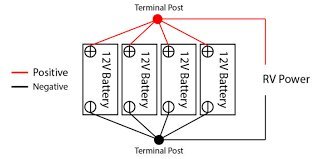Comodave
Moderator Emeritus
- Joined
- Jul 2, 2015
- Messages
- 22,456
- Location
- Au Gres, MI
- Vessel Name
- Black Dog
- Vessel Make
- Formula 41PC
I don’t see how putting the negative placement on the opposite battery would make any difference since they are now connected in parallel, please explain.
Absolutely hook the positive lead on one battery and the negative lead on the other battery. Otherwise the resistance in the paralleling cables will make the second battery in effect disappear. You want one lead going into one end of the bank and the other lead going into the other end of the bank.



